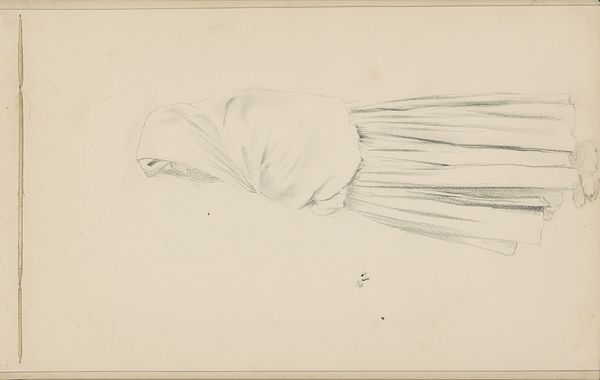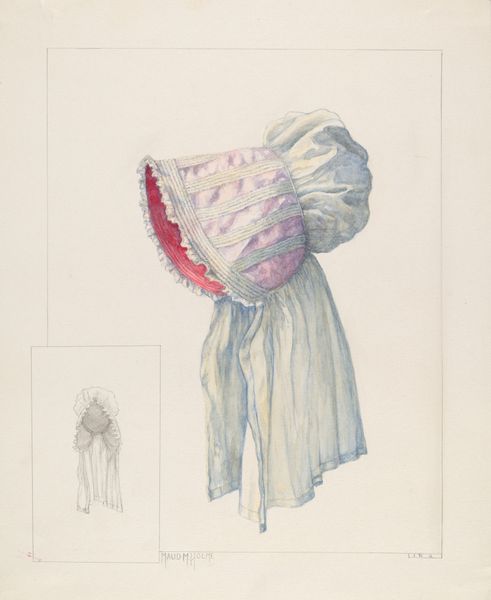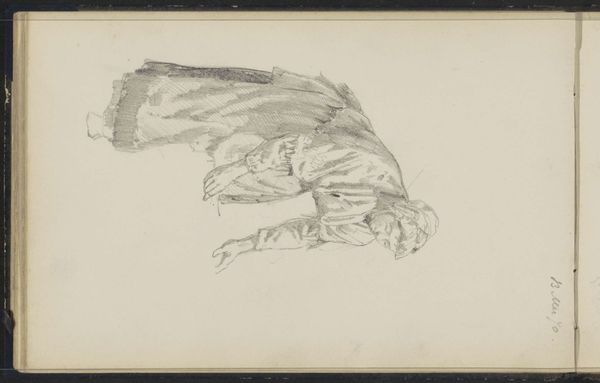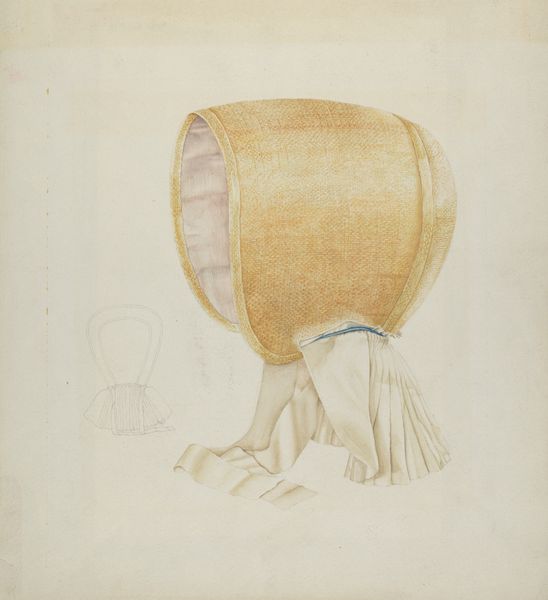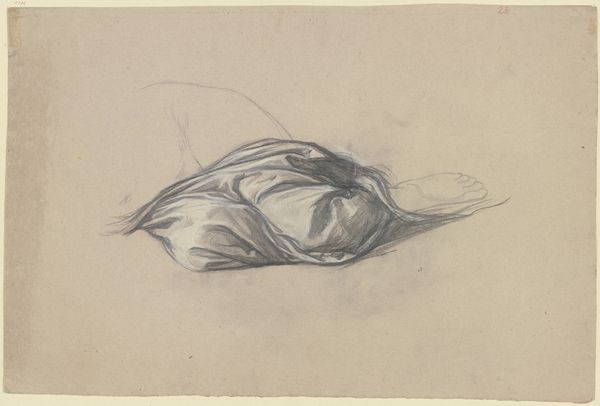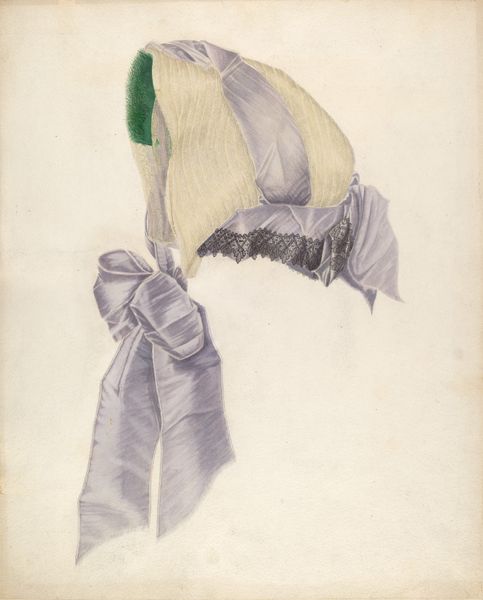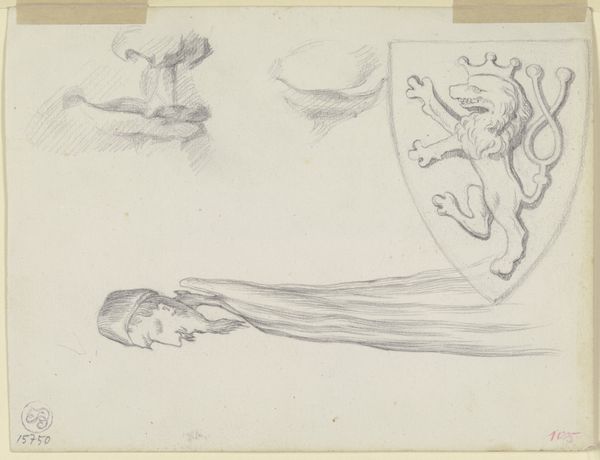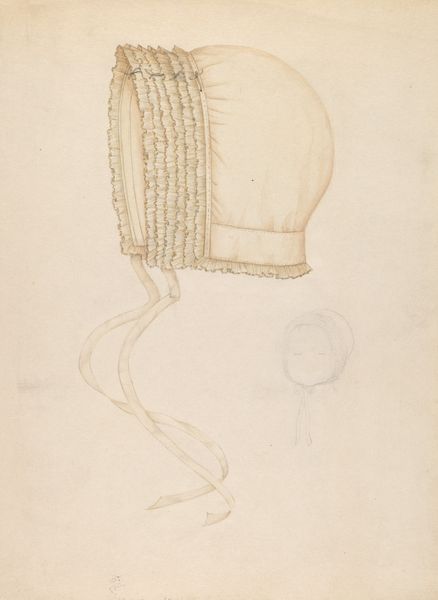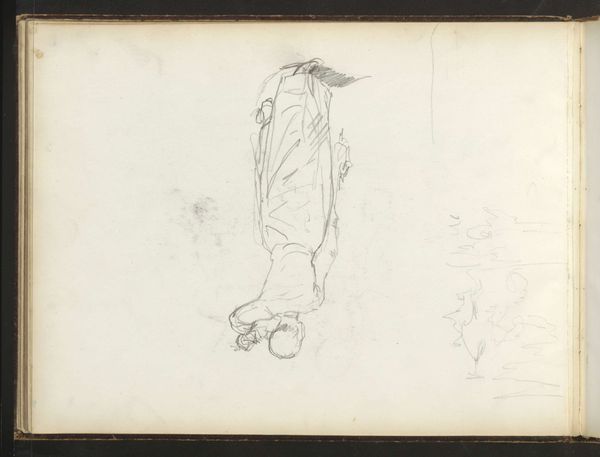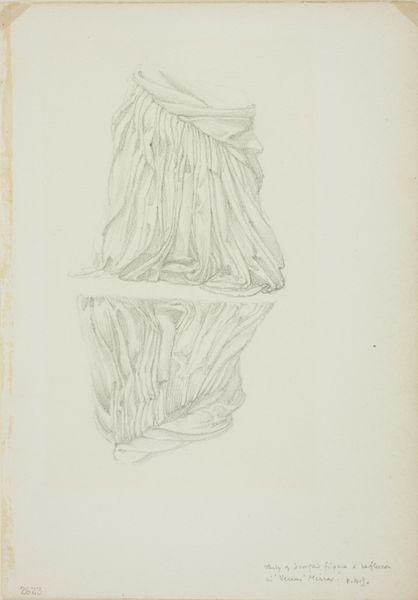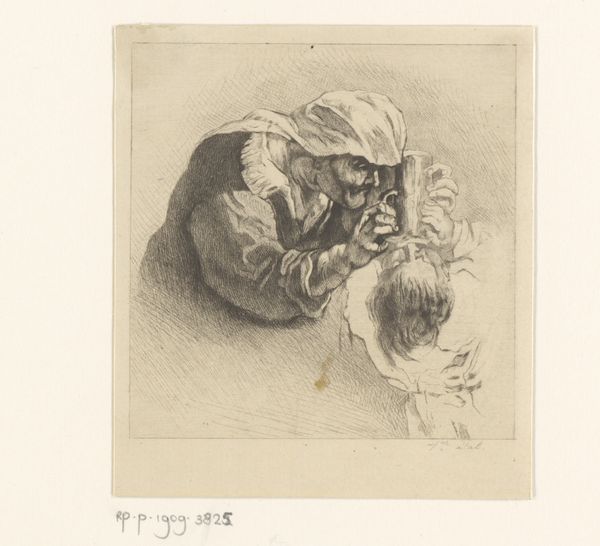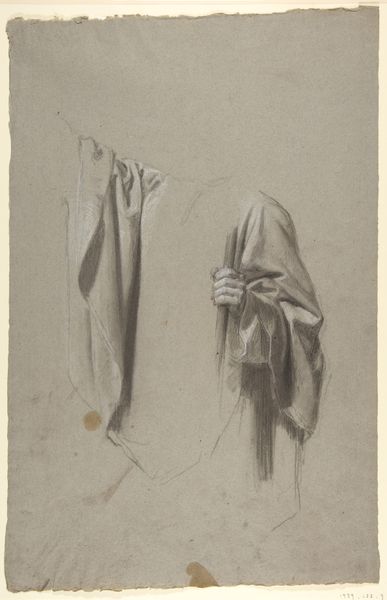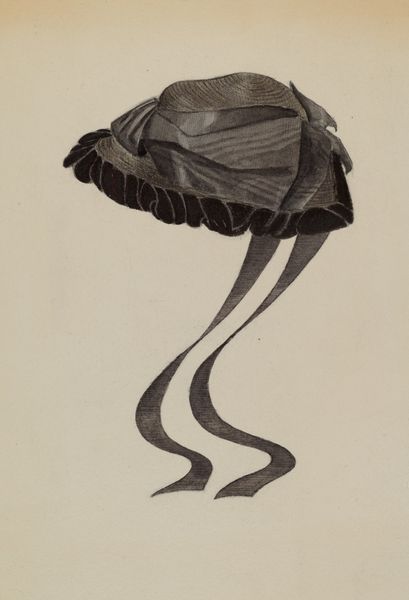
drawing, pencil
#
portrait
#
pencil drawn
#
drawing
#
pencil sketch
#
pencil drawing
#
pencil
Copyright: National Gallery of Art: CC0 1.0
Editor: Here we have Lucien Verbeke’s “White Satin Hat,” a pencil drawing from around 1937. I’m struck by how delicate it looks; it's almost as if you could reach out and feel the softness of the fabric. What's your take on this seemingly simple subject? Curator: The choice of subject, a fashionable hat, is not as simple as it appears. During the 1930s, fashion became increasingly accessible through mass media. So this drawing engages with questions around the democratization of style. Is it aspirational, capturing an elite object, or is it part of a broader trend, making fashion accessible to the everyday woman? What does the repetition of the hat suggest to you? Editor: That's an interesting point. I guess the two hats could be seen as emphasizing its design, making it accessible for reproduction and distribution. Is that a fair reading? Curator: Precisely. It raises questions about originality versus reproduction, particularly relevant in a society increasingly influenced by mass production and media. Consider how Verbeke, by rendering it in pencil, a medium accessible to many, potentially further democratizes this emblem of style. The delicate lines, as you mentioned, invite a connection beyond mere visual consumption. Do you see anything in the presentation that hints at the social role this object might play? Editor: Well, the clean backdrop makes it feel almost like a product advertisement or a catalog image. Curator: Exactly! Think about the rise of consumer culture. An artwork like this isn't just about the object itself; it reflects the broader cultural landscape where fashion played an increasingly prominent role in self-expression and social mobility. I think studying its function really contextualizes the role it plays within visual culture. Editor: I hadn’t considered how fashion of the era spoke to this bigger story about consumerism and access. Thanks! Curator: My pleasure. It highlights how even seemingly simple images can be quite complex reflections of their time!
Comments
No comments
Be the first to comment and join the conversation on the ultimate creative platform.
